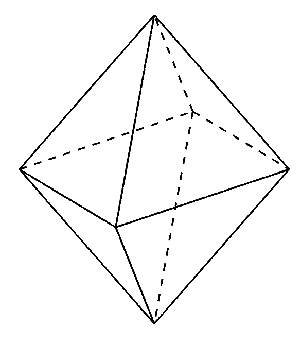A lot of projective geometry is about incidence, that is, what points are collinear, which lines intersect, and that kind of thing. We don't really seem to talk about the normal things you talk about in Euclidean geometry - things like lengths, angles, areas, or in other words, the particulars of shapes. It's just about which points are in which lines, really.
So, a Laguerre plane is a type of circle plane (also called a Benz plane in one source). A circle plane has points, and the circles are made up of points. Points can be considered parallel to each other by some kind of equivalence relation*. If you make up a system like this, then it's a circle plane if it satisfies these axioms:
- Any three different points, no two of which are parallel to each other, determine a unique circle. (Note: In Euclidean space, any three different points determine a unique circle.)
- Given a point P on a circle C, and another point Q that is not parallel to P, there is a unique circle that contains both P and Q and either touches C at exactly one point, or else is C.
- Every circle contains exactly one point from every parallel class. (For instance, if A, B, and C are all parallel, and no other point is parallel to them, then every circle contains exactly one of A, B, or C. A, B, and C would be a "parallel class.")
- If you have different parallel relations - that is, completely different standards about what makes points parallel or not - then if you choose two parallel classes, each from a different relation, they'll have exactly one point in common. (You're allowed to have up to 2 parallel relations.)
- A circle has at least three points.
Now, Laguerre planes are a subset of these circle planes - specifically, the subset that has only one parallel relation, or way of determining whether points are parallel.


 An example of a Laguerre plane could start with the points that make up a vertically-oriented cylinder. We'll call points "parallel" if they are on the same vertical line on the cylinder. The circles will be non-vertical cross-sections of the cylinder, which can be straight across or at an angle (making them what we'd usually call ovals).
An example of a Laguerre plane could start with the points that make up a vertically-oriented cylinder. We'll call points "parallel" if they are on the same vertical line on the cylinder. The circles will be non-vertical cross-sections of the cylinder, which can be straight across or at an angle (making them what we'd usually call ovals).Does this satisfy the axioms?
- Given three points around the cylinder, no two of which are straight up or down from each other, can we make a cut of the cylinder that contains these points? Since three points determine a unique plane, and the intersection of that plane with the cylinder will be a circle or oval, yes, we can.
- Given a point on a circle, and another point that isn't vertical from the first point, can we find exactly one circle that contains both and touches the first circle at exactly one point? I think we can.
- It's pretty clear that any non-vertical cut across the cylinder crosses every vertical line exactly once.
- This axiom doesn't apply since we only have one parallel relation (the one about the vertical lines).
- Does every circle have at least three points? Yeah - we're doing this in the reals, so every circle has an infinite number of points.
 That's (assuming I'm not mistaken) an example of a Laguerre plane with an infinite number of points, but we can make a finite Laguerre plane. In fact, an example of the smallest kind of Laguerre plane can start with an octahedron. The points are the vertices, and the "circles" are the faces. Points are parallel if they are not joined by an edge. Here we have only six points, and eight circles.
That's (assuming I'm not mistaken) an example of a Laguerre plane with an infinite number of points, but we can make a finite Laguerre plane. In fact, an example of the smallest kind of Laguerre plane can start with an octahedron. The points are the vertices, and the "circles" are the faces. Points are parallel if they are not joined by an edge. Here we have only six points, and eight circles.The parallel classes in this example are the three pairs of opposing points of the octahedron (for instance, the topmost and bottommost points in this picture make up a parallel class). You can see that each circle (i.e., face of the octahedron) touches exactly one of each pair of opposing points.
I really enjoy the elegance of this, especially the finite example (stolen directly from A Geometrical Picture Book).
Sources
B. Polster and G. F. Steinke, "Criteria for Two-Dimensional Circle Planes", Contributions to Algebra and Geometry, Volume 35, 1994.
B. Polster, A Geometrical Picture Book. Springer-Verlag, 1998.





















3 comments:
You say that the Octahedron is the simplest Laguerre plane, but what about just a triangle?
Three points, none of which are parallel to any of the others. Only one circle, the triangle connecting the three points.
1. There are only three points, no two of which are parallel to each other, and these three points determine a unique circle (the only circle).
2. Given a point P on the only circle C, and another point Q, there is a unique circle that contains both P and Q and is C, since C is the only circle.
3. Each point is in a parallel class by itself, and the circle contains all three.
4. Only one parallel relation.
5. The circle contains three points.
What am I missing?
For that matter, shouldn't "there exists at least one circle" be an axiom as well, to rule out the empty set?
I'm not sure. I thought of the one-circle solution before I went to bed as well.
Post a Comment